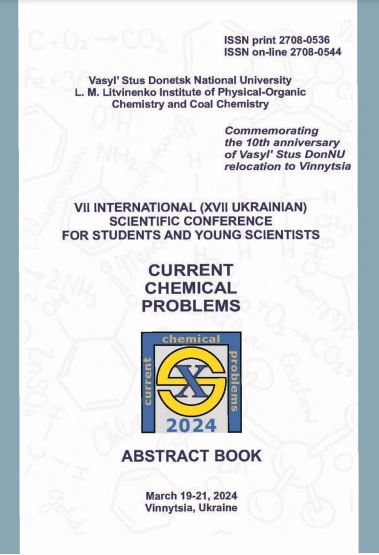Structural chemistry of Cu(I) π-coordination compounds with allyl derivatives of heterocycles
Анотація
Copper(I) π-coordination compounds are quite appealing objects for interdisciplinary research in view of their catalytic, photoluminescent, ferroelectric, and nonlinear optical properties [1]. Cu(I)-olefin complexes based on allyl derivatives of organic heterocycles (ADH) dominateу the crystal engineering of mentioned coordination compounds. That is defined by a specific concurrent coordination of heterocyclic donor atoms and “soft base” – allylic C=C bond to the central “soft acid” Cu+ ion. Crystalline compounds, self-assembled from the above organic ligands under the differently modified conditions of the alternating-current electrochemical technique, attract attention due to the presence of various Cu(I) salts (which are unstable or unknown in a free state): CuNO3, CuHSO4, Cu2SO4, Cu2SiF6, Cu(NH2SO3), etc. Usually, ADH in the structures of the obtained complexes performs a π,σ-bridging or π,σ-chelate-bridging function, linking the Cu(І) ions into island fragments or coordination polymers of different dimensions.
Посилання
Yu. Slyvka, A.A. Fedorchuk, E. Goreshnik, N. Pokhodylo, J. Jedryka, K. Ozga, M. Mys’kiv, Polyhedron. 2022, 211, 115545.

